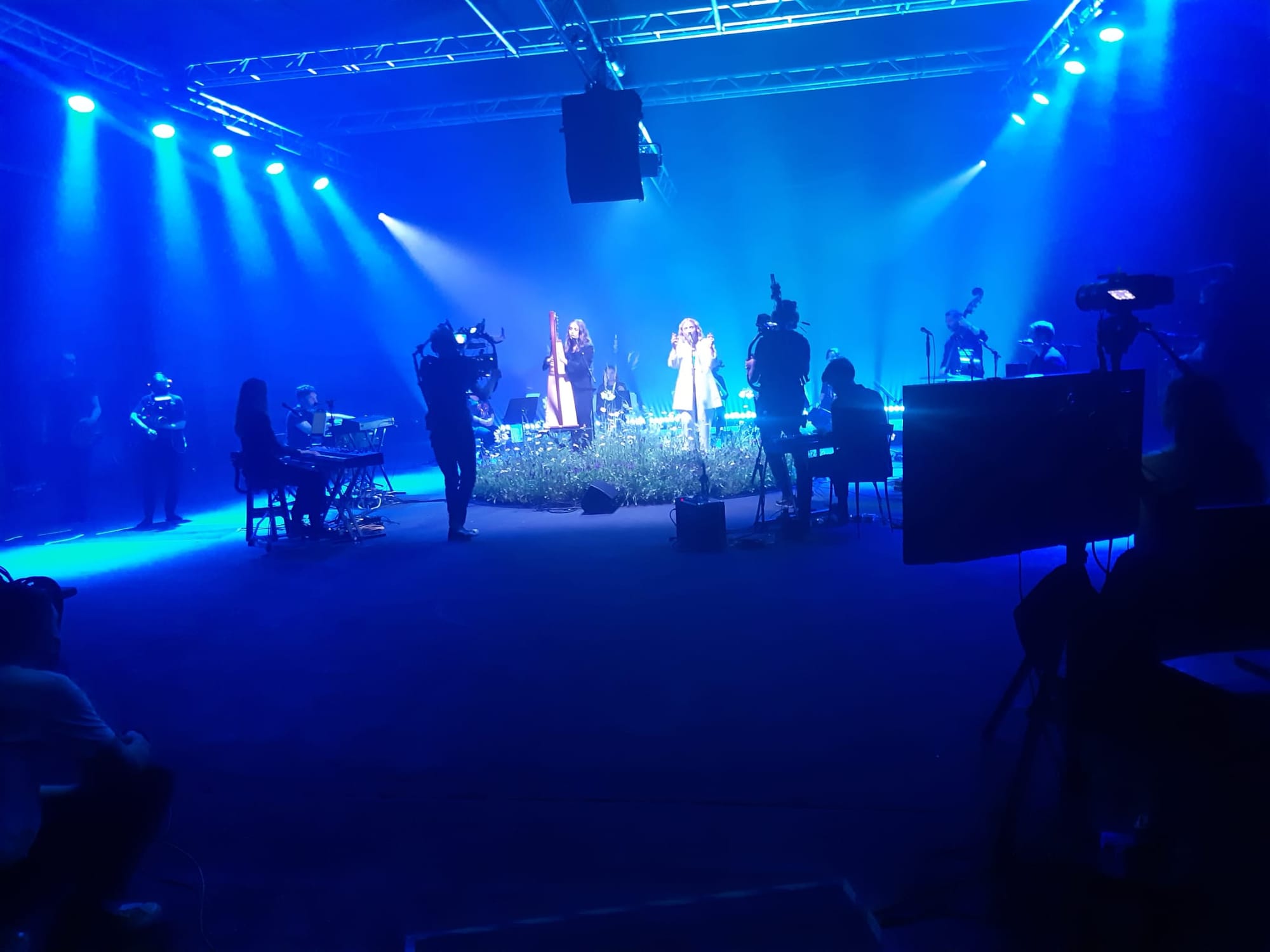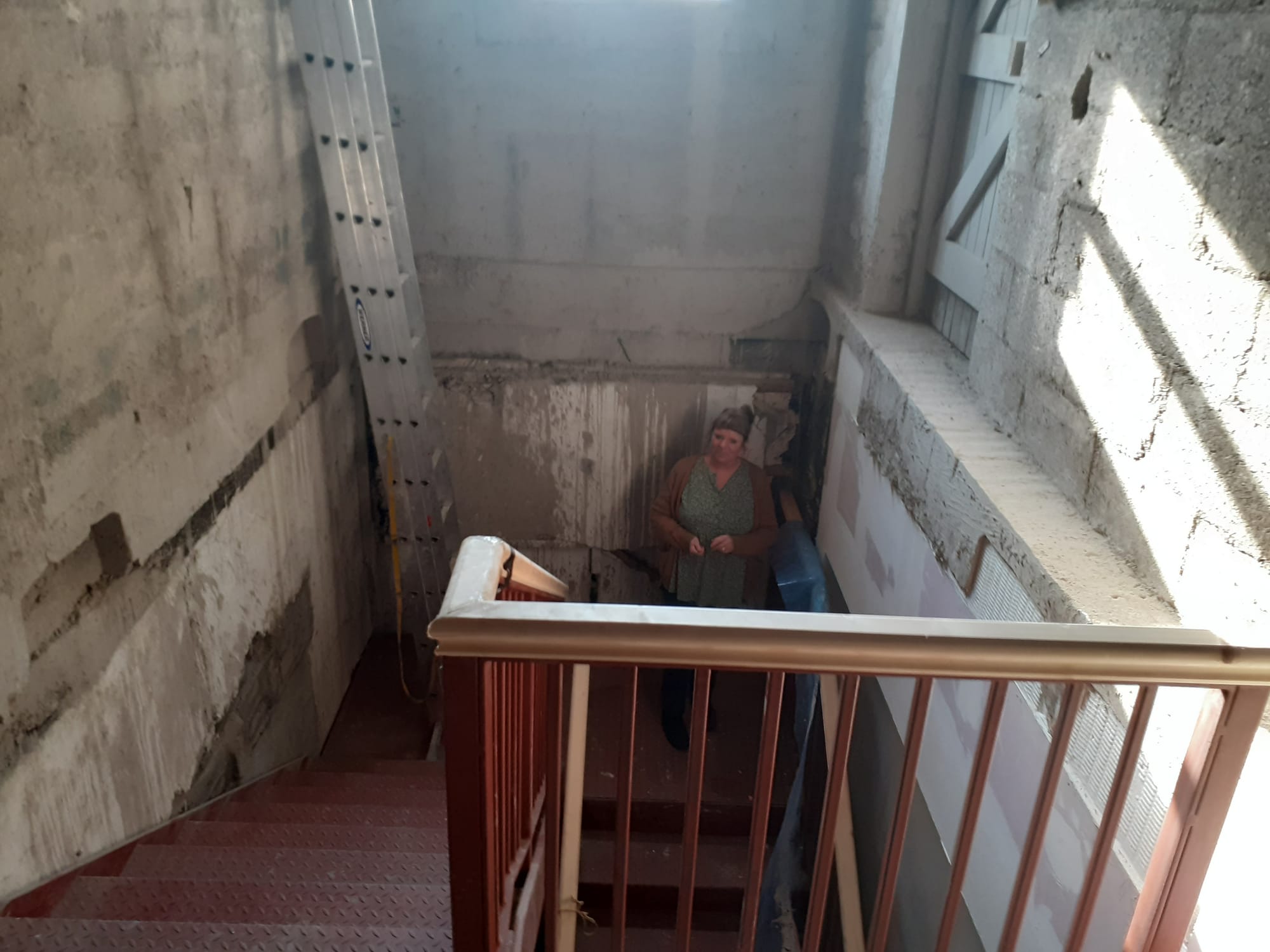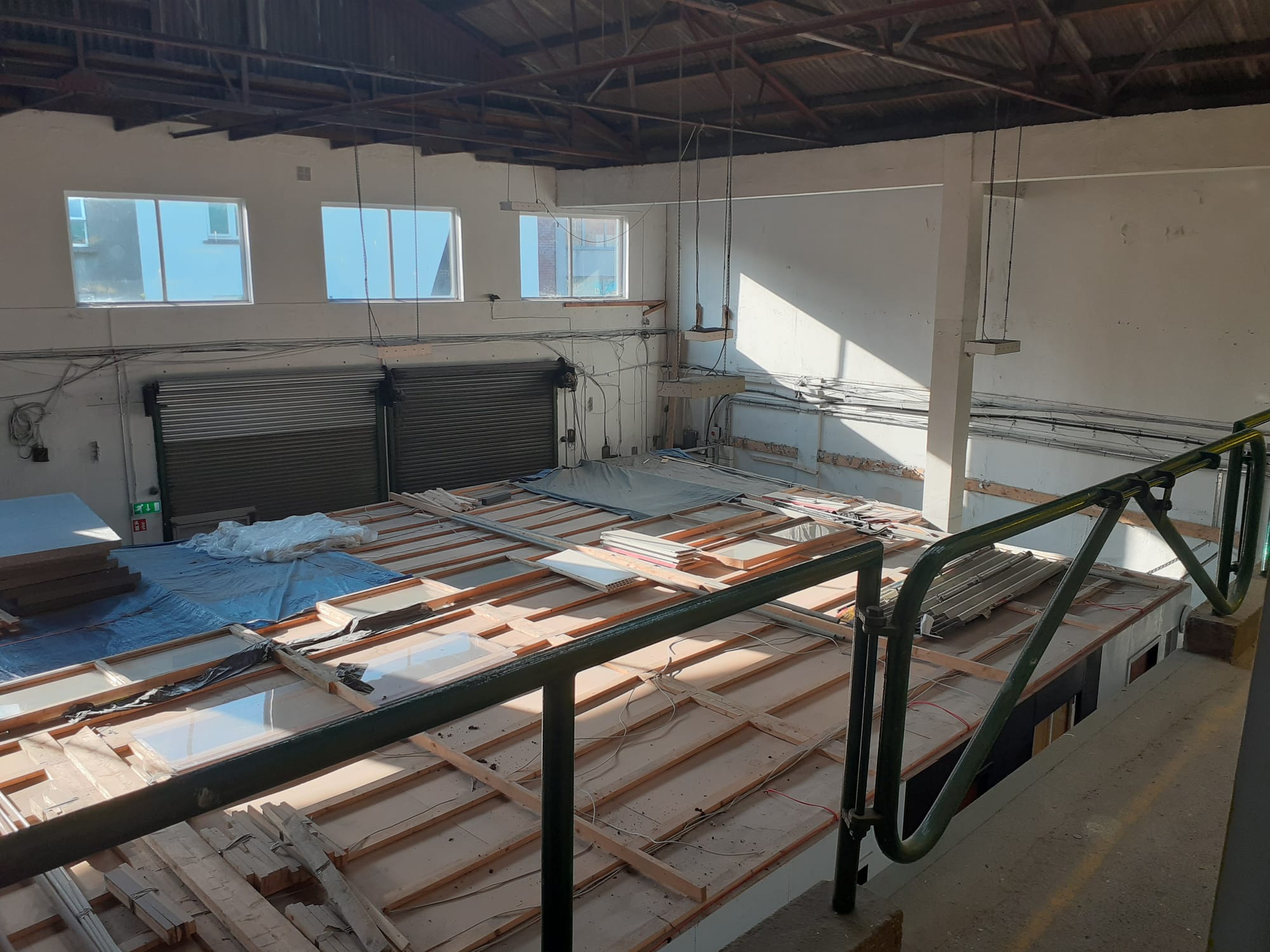What’s the best way to tell area residents about plans for a new asylum shelter nearby?
The government should tell communities directly about plans for new asylum shelters, some activists and politicians say.
After years of work and hundreds of thousand of euro, Vanessa Fielding is about ready to throw open the refurbished warehouse that is now part of The Complex arts space.

Vanessa Fielding walks backwards and looks up at the rigs and rafters of the huge, nearly empty room.
Builders and technicians slip in and out of some of the four entrances, letting in, as they do, the dim sound of distant drilling.
Work began in 2018 and now The Complex arts space on Mary’s Abbey in Smithfield, is almost finished – although Fielding, its artistic director, couldn’t wait for it to be totally finished before holding the first events.
On 16 March, rock band Fontaines D.C. threw up a stage and gigged to a sold-out crowd of 350 people. Next, more exhibitions, gigs, theatre and art.
The stage is gone and the room a blank canvas, ready for the next.
That was Fielding’s vision for the room that used to store huge fridges for ripening bananas.
“A blank canvas, you can come in and do whatever you like,” she says. “You can have an audience walking around, you can have an audience seated anywhere.”
Fielding loves theatre where the audience sits around, in or amongst the performance, and felt there wasn’t a space in Dublin that was versatile enough for it, somewhere without fixed seating and a permanent stage, she says. So she went about overseeing the creation of one.
It’s the kind of project that the draft development plan says the city council will look to encourage: owners allowing their buildings to be converted into art spaces.
But Fielding has learnt a lot about the challenges of doing that while leading the renovation of The Complex, she says, with hurdles around planning permission, meeting fire regulations, and finding the money to do it all.
The building, home to The Complex since June 2017, sits close to the Luas red line, and is painted red with white capital letters spelling “Art Lives Here”.
“It was in rag order when we came and the roof half fallen in so we’ve made good on it,” says Fielding, waving her hand towards the northern end of the large room which was until recently mostly unused, except for once-off performances.
The western side of the building, close to Arran Street East, was in better shape than the large warehouse space. So in 2019, they opened 16 studios for artists to work in and a gallery space for artists to hold exhibitions and events.

Refurbishing the food-storage warehouse into a place for public use and performance cost about €600,000, excluding staff costs, says Fielding.
It’s less than first quoted. In 2017, consultants had said it would take €1.8 million, she says. “It was absolutely prohibitive, there was no way we could do it.”
Fielding went about reducing the costs herself, she says. Outside the performance room, up a red steel stairwell leading to artists’ studios, she runs her hand along a fresh timber handrail.
Consultants had estimated €15,000 for a stainless steel rail but Fielding found out she could do it in timber for less than €500, she says.
“It’s a really simple thing. But the assumptions are from the architects, who are also of course on a percentage of what the build is,” she says.
The Complex had a payout from previous landlords on Little Green Street for ending its lease early to build a hotel, she says, and they bulked that up with council, Department of Culture, and Arts Council grants, among others.
They applied for planning permission for change of use in November 2018 and were approved in June 2019, when she could begin making fire certification applications. This all takes time that other arts organisations may not have, she says.
The Complex doesn’t have a long lease on the building, she says. “We don’t own it. We’ve got three or four more years here.”
Their landlords may decide to extend their lease, or the government or council could buy the building for them, she says, but that’s uncertain.
Most people would quite rightly say it’s not worth the hundreds of thousands, she says, “to convert this space into a place for only those years. And it’s true, it’s not worth it really.”
A cultural audit commissioned by the council found that just 11 of 249 cultural buildings mapped in Dublin – which were those with some kind of public subsidy or grant aid – were of a high enough standard for making or experiencing professional cultural work.
Fielding says she feels she didn’t have an option but to put the work and money into the Smithfield building, as The Complex, had nowhere else to go.
She started The Complex, a charity which aims to host artists, art and performance, after holding a big theatre production in Smithfield in 2015. “Everybody really, we had such a good time doing it that people thought, can we sort of stick together, can we do something else? So we set about trying to do that.”
Her work directing plays was put on hold to work full-time on transforming the building, she says. “I thought, after a while, if I don’t do it, then I don’t know who will be able to.”
In Fielding’s office, which she shares with the gallery and building managers, she shuts the door to close out the drilling.
There’s still more work to be done on the building. The opening for the stairwell has to be moved from inside to an outside entrance on Arran Street East to meet fire-safety rules..
“We have to compartmentalise the whole building,” she says. “What they do is they try and separate sections out so people have their own escapes.”
Fire certification takes a long time, she says. An architect makes an application for the building, and you get a fire consultant, which can take a few months, she says.
“In our case, they refused it twice. It was never really clear why. We then appealed it and that took another seven months, which was a really long time to wait,” she says.
Older buildings have to meet the same standards as new ones, she says, and that is something that she questions. “There’s no forgiveness for it being an old building.”

Fielding says she is not sure why the large performance room needed another exit put in, costing thousands, she says. “It’s giant, it’s wide. It’s a totally useless space.”
“Nobody’s suggesting that we wouldn’t do things safely. It’s just, I mean, how far do you have to go?” she says. “The regulations are so strict.”
“They just insist that it goes in and if you can’t then afford it, well then too bad. The whole thing collapses. And that’s kind of a very severe ultimatum, isn’t it?” she says.
She felt approached with scepticism rather than encouragement, she says. “It’s certainly not going to help vacant spaces or cultural use.”
In other cities, it isn’t like that, she says. “The services work with you and go, ‘Right, well, what can I do to assist you?’ Rather than, ‘No, sorry, can’t do that, no, no, there’s no hope of you getting any money, why would you be asking?’”
The City Arts Office’s preference, according to the draft city development plan, is for community and arts spaces to be designed into large developments, rather than retrofitted into old premises. It costs so much to fit them out even for “meanwhile” use, it says.
Nevertheless, the council’s arts office will “continue to encourage owners of unused premises and landowners to use their vacant building for arts and culture”, says the draft plan.
“Meanwhile” spaces on short-term arrangements may suit certain uses, and the council will continue to take these opportunities when they arise, it says.
The council’s arts and planning offices would also continue to act as brokers between owners of unused premises and landowners, to encourage such spaces to be used for artistic and cultural purposes, it says.

Fielding says she thinks the development plan doesn’t take into account the lack of support for those trying to fit-out spaces, but without experience making planning applications and managing regulations.
“They are doing a good thing by putting it out there. But I think it’s just unthought and it sounds great. But my experience is miles from that,” she says. “You need somebody in the middle to help.”
There also could be a relaxing of some rules for older buildings, she says. “Albeit that we’ve still got to make places safe, but nobody’s going to be able to afford to do all that stuff.”
The draft city development plan also mentions an objective to create a policy document to inform the preparation of audits, use of vacant spaces and toolkits for provision of cultural and arts facilities.
Joe Costello, a Labour party councillor, says he would support an office to support people with grants and applications for these spaces.
“It is burdensome for organisations to actually go through the red tape that’s required. It’s very demanding,” he says.
A spokesperson for the council said it could not respond to queries as to the idea of a support office.
The team is busy assessing more than 3,500 submissions to the draft development plan, and preparing a report on these submissions to present on 5 July, they said.
Fielding says that more funding for the arts is needed too. She suggests increasing the Per Cent for Art scheme, where 1 percent of the funding for a publicly funded infrastructure or building project can be allocated to commissioning a work of art.
The council’s arts budget is tiny, she says. “For the size of the city, it’s ridiculous really. I think everyone feels like that.”
Get our latest headlines in one of them, and recommendations for things to do in Dublin in the other.